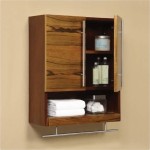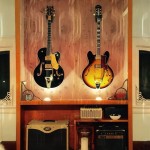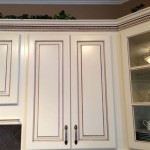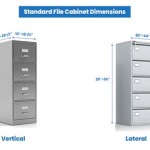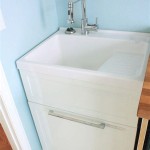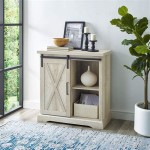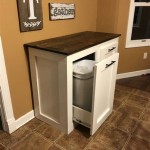The Perfect Tool Chest Side Cabinet For Any Craftsmanship Tools
A well-organized workspace is fundamental to efficient and enjoyable craftsmanship. Whether engaged in woodworking, automotive repair, metalworking, or any other hands-on profession, having tools readily accessible and properly stored can significantly enhance productivity and reduce frustration. The tool chest side cabinet emerges as a valuable addition to any workshop, offering enhanced storage capacity and organization possibilities that traditional tool chests alone may lack. This article explores the features, benefits, and considerations involved in selecting the ideal tool chest side cabinet to suit specific craftsmanship needs.
Tool chests, while providing a central storage location, often face limitations in accommodating the growing collection of tools that craftsmen accumulate over time. Larger or specialized tools may not fit comfortably within the drawers of a standard tool chest. The addition of a side cabinet addresses this limitation by providing supplementary storage space, allowing for the segregation and organization of tools based on function, size, or frequency of use. This expanded storage capability contributes to a more streamlined workflow by enabling craftsmen to locate and retrieve the necessary tools quickly and efficiently.
Enhanced Storage Capacity and Organization
The primary advantage of a tool chest side cabinet lies in its ability to significantly augment storage capacity. This increased storage space is not merely about accommodating more tools; it's about enabling a more structured and logical arrangement. Side cabinets provide the flexibility to organize tools according to specific criteria, thereby improving accessibility and reducing the time spent searching for the right tool. This, in turn, directly translates to increased efficiency and a more enjoyable work experience.
Consider the craftsman specializing in woodworking. He or she might dedicate the main tool chest to frequently used items like chisels, hand planes, and measuring tools. The side cabinet, on the other hand, could be designated for power tools such as routers, sanders, and drills, along with their corresponding accessories. This compartmentalization prevents the cluttering of the main tool chest and ensures that tools are readily available when needed, without having to sift through a disorganized mess. Similarly, an automotive mechanic could use a side cabinet to store specialty diagnostic tools, air tools, or components related to specific vehicle systems, keeping them separate from everyday wrenches and sockets.
Beyond simple storage, the side cabinet allows for categorized organization. Drawers can be labeled to indicate the contents, or dividers can be used to create dedicated sections for particular types of tools. This systematic approach fosters a sense of order and professionalism within the workshop, promoting a more focused and productive work environment. The ability to easily locate tools also reduces the likelihood of damage or loss, as tools are less likely to be misplaced or subjected to unnecessary wear and tear.
Durability and Construction Materials
The longevity and performance of a tool chest side cabinet are inextricably linked to the quality of materials used in its construction. The most common materials include steel, aluminum, and composites, each offering distinct characteristics that must be carefully considered based on the intended usage and environmental conditions of the workshop. Steel remains a popular choice due to its robust strength, resistance to impact, and affordability. However, steel is susceptible to rust if not properly coated or maintained. Aluminum, while lighter than steel, provides excellent corrosion resistance and is a suitable option for environments with high humidity or exposure to moisture. Composite materials, such as reinforced plastics, offer a balance of strength, lightweight properties, and resistance to various chemicals and solvents, making them ideal for demanding industrial settings.
The gauge of steel used in the cabinet's construction is a critical factor in determining its overall durability. Higher gauge numbers indicate thinner steel, while lower gauge numbers represent thicker, more robust steel. For heavy-duty applications involving the storage of substantial weight, a side cabinet constructed from a thicker gauge of steel is essential to prevent warping, bending, or structural failure. The welding quality is another critical aspect to examine. Welds should be clean, consistent, and free from defects to ensure the structural integrity of the cabinet. Poorly executed welds can compromise the strength of the cabinet and lead to premature failure under stress.
The finish applied to the cabinet also plays a significant role in its longevity and aesthetic appeal. Powder coating is a widely used finish that provides excellent resistance to scratches, corrosion, and chemicals. It is a durable and attractive option for both home and professional workshops. Other finishes, such as enamel or paint, may be less durable but can offer a wider range of color options. Regardless of the finish chosen, it is important to ensure that it is properly applied and cured to provide adequate protection against the elements and daily wear and tear.
Features and Functionality
Beyond the basic storage function, modern tool chest side cabinets often incorporate a range of features designed to enhance usability and convenience. These features can significantly improve the overall efficiency and enjoyment of the craftsman's work experience. Some common features to consider include drawer liners, power strips, locking mechanisms, and adjustable shelves.
Drawer liners, typically made of foam or rubber, are essential for protecting tools from damage and preventing them from sliding around inside the drawers. These liners provide a cushioned surface that absorbs impacts and minimizes the risk of scratching or denting tools. They also help to dampen noise and prevent tools from rattling during movement, contributing to a quieter and more organized workshop environment. Power strips integrated into the side cabinet provide convenient access to electricity for charging power tools, running lights, or operating other electrical equipment. This eliminates the need for extension cords and reduces clutter around the workbench. The placement of the power strip should be carefully considered to ensure it is easily accessible and protected from accidental damage.
Locking mechanisms are crucial for securing valuable tools and preventing unauthorized access. Side cabinets can be equipped with various types of locking systems, ranging from simple keyed locks to more sophisticated combination or electronic locks. The choice of locking mechanism should be based on the level of security required and the value of the tools being stored. Adjustable shelves provide additional flexibility in organizing tools and equipment. These shelves can be adjusted to accommodate items of varying sizes and shapes, maximizing the usable space within the cabinet. The ability to customize the shelves also allows for the storage of larger items, such as paint cans, toolboxes, or other workshop supplies.
Additional considerations include drawer slides. High-quality ball-bearing drawer slides enable smooth and effortless operation of the drawers, even when fully loaded. Look for slides with a high weight capacity to ensure they can handle the weight of the tools being stored. Some side cabinets also feature gas struts on the doors, which provide smooth and controlled opening and closing, preventing the doors from slamming shut. This can be particularly useful when working in a busy or confined space.
Finally, the overall design and aesthetics of the side cabinet should also be considered. While functionality is paramount, choosing a cabinet that complements the existing workshop decor can contribute to a more pleasant and inspiring work environment. Consider the color, finish, and overall style of the cabinet to ensure it integrates seamlessly with the rest of the workshop.
By carefully evaluating these factors and selecting a tool chest side cabinet that meets specific needs and preferences, craftsmen can enhance their organization, efficiency, and overall work experience. The investment in a high-quality side cabinet is an investment in the future of their craft, providing a durable and reliable storage solution for years to come.

There S A Woodworking Storage Surprise In This Tool Chest

Husky Modular 20 In W X D Standard Duty 3 Shelf Red Rolling Side Tool Chest H20lockmodred The Home Depot

10 Best Auto Mechanic Tool Boxes For 2025 The Family Handyman

Rtb Exclusive Combo 72 Roller Tool Cabinet Top Hutch 2 Side Lockers

Craftsman Launches V Series Pro Tool Storage

Tool Storage Gallery

You Asked About My Tool Cupboards Paul Ers Blog

Metalworking S Add Functionality To Snap On Tool Chest Aday

You Asked About My Tool Cupboards Paul Ers Blog

Best Garage Toolboxes For 2025 Tested
Related Posts

